This article has multiple issues. Please help improve it or discuss these issues on the talk page . (Learn how and when to remove these messages) |
A rat trap is a trap designed to catch rats. Designs are often larger variations on mousetraps.
This article has multiple issues. Please help improve it or discuss these issues on the talk page . (Learn how and when to remove these messages) |
A rat trap is a trap designed to catch rats. Designs are often larger variations on mousetraps.
Spring traps for large rodents such as rats or squirrels are powerful enough to break the animal's neck or spine. They may break human fingers as well, whereas an ordinary spring-based mousetrap is very unlikely to break a human finger. Rat spring traps may not be sensitive enough to spring when a mouse takes the bait.
A rat cage trap is a metal cage box-shaped device that is designed primarily to catch rats without killing them. Food bait (not poisoned) is put in the cage trap. When an animal enters the cage and moves toward the bait, the mechanism triggers and closes a door over the entry point. The animal is caught alive and without injury. The animal can be transported and released elsewhere or subsequently killed.
Glue traps are non-poisonous sticky glue spread over card boards and the like and kept in places rats frequent, which gets them stuck to it when they pass over it. The rat will subsequently die from dehydration and asphyxiation. A bait may also be placed on the cardboard to attract the rats.
Another form of non-lethal trap is one where the wires it is constructed of are cut and formed into a funnel shape directed into the body of the cage. This design is usually dome-shaped, with the funnel at the crown. Rats are extremely flexible and can push through the narrower opening into the cage, but cannot escape due to the ends of the wires poking them in the face. The advantage of this design is that it can catch more than one rat at a time.
Other types of traps (as shown below) are designed to kill the animal.
Electronic rat traps detect the presence of a rodent via metal plates on the floor of the trap, then deliver a lethal dose of high-voltage electricity stepped up from batteries to several thousand volts. Some brands offer remote indication to tell you when the trap has operated. The Eliminator (South Africa) and Victor (US) are two brands of electronic rat traps.
Glue traps, however, are not considered a humane method of rodent control, especially if the rodent is left to die. They can also harm non-targeted animals. However, they are still commonly used by professionals for insect monitoring in containers that prevent access by rodents.
Another trap design, often considered more humane, is a self-resetting rat trap like the Goodnature A24. These traps kill rodents with an impact from a CO2-powered piston and are self-resetting.
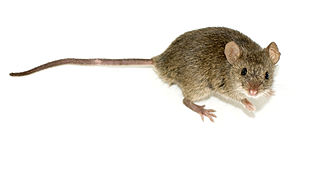
A mouse is a small rodent. Characteristically, mice are known to have a pointed snout, small rounded ears, a body-length scaly tail, and a high breeding rate. The best known mouse species is the common house mouse. Mice are also popular as pets. In some places, certain kinds of field mice are locally common. They are known to invade homes for food and shelter.

The fancy rat is the domesticated form of Rattus norvegicus, the brown rat, and the most common species of rat kept as a pet. The name fancy rat derives from the use of the adjective fancy for a hobby, also seen in "animal fancy", a hobby involving the appreciation, promotion, or breeding of pet or domestic animals. The offspring of wild-caught specimens, having become docile after having been bred for many generations, fall under the fancy type.
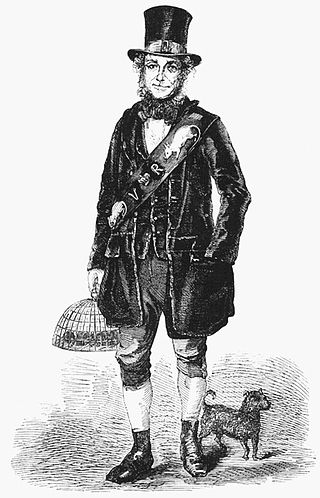
Jack Black was a rat-catcher and mole destroyer from Battersea, England during the middle of the 19th century. At the time, England was ravaged by a massive population of rats that disrupted crops and spread disease, and Black's rat killing abilities made him a minor celebrity and Queen Victoria's official rat-catcher. Though he has been called the rat's "most notorious enemy," he did not kill all rats. Black bred unusually colored rats and sold them as pets, playing a large role in domesticating the animal. He had a flamboyant appearance, typically donning a self-made "uniform" of a green topcoat, scarlet waistcoat, and breeches, with a huge leather sash inset with cast-iron rats.

A mousetrap is a specialized type of animal trap designed primarily to catch and, usually, kill mice. Mousetraps are usually set in an indoor location where there is a suspected infestation of rodents. Larger traps are designed to catch other species of animals, such as rats, squirrels, and other small rodents.

Pest control is the regulation or management of a species defined as a pest; such as any animal, plant or fungus that impacts adversely on human activities or environment. The human response depends on the importance of the damage done and will range from tolerance, through deterrence and management, to attempts to completely eradicate the pest. Pest control measures may be performed as part of an integrated pest management strategy.
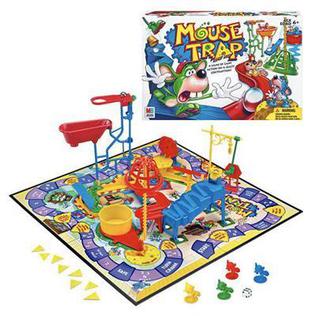
Mouse Trap is a board game first published by Ideal in 1963 for two to four players. It is one of the first mass-produced three-dimensional board games. Players at first cooperate to build a working mouse trap in the style of a Rube Goldberg machine. Then, players turn against each other to trap opponents' mouse-shaped game pieces.

Rodenticides are chemicals made and sold for the purpose of killing rodents. While commonly referred to as "rat poison", rodenticides are also used to kill mice, woodchucks, chipmunks, porcupines, nutria, beavers, and voles. Despite the crucial roles that rodents play in nature, there are times when they need to be controlled.

The lesser bandicoot rat, Sindhi rice rat, Bengal rat or Indian mole-rat is a giant rat of Southern Asia, not related to the true bandicoots which are marsupials. They can be up to 40 cm long, are considered a pest in the cereal crops and gardens of India and Sri Lanka, and emit piglike grunts when attacking. The name bandicoot is derived from the Telugu language word pandikokku, which translates loosely to "pig-rat". Like the better known rats in the genus Rattus, bandicoot rats are members of the family Muridae. Their fur is dark or (rarely) pale brown dorsally, occasionally blackish, and light to dark grey ventrally. The head-body length is around 250 mm, and the uniformly dark tail is shorter than the head-body length.

A fancy mouse is a domesticated form of the house mouse, one of many species of mice, usually kept as a type of pocket pet. Fancy mice have also been specially bred for exhibiting, with shows being held internationally. A pet mouse is inexpensive compared to larger pets, and even many other pet rodents, but mice are comparatively short-lived: typically only 2 to 3 years.
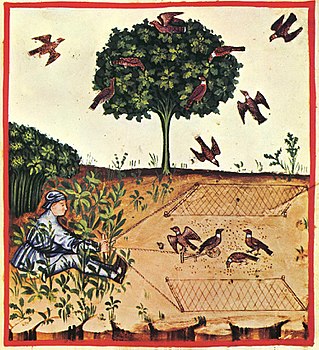
Animal trapping, or simply trapping or ginning, is the use of a device to remotely catch and often kill an animal. Animals may be trapped for a variety of purposes, including for meat, fur, sport hunting, pest control, and wildlife management.
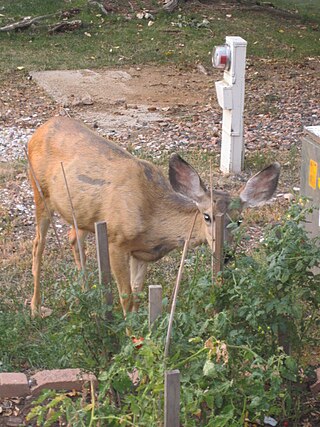
Nuisance wildlife management is the selective removal of problem individuals or populations of specific species of wildlife. Other terms for the field include wildlife damage management, wildlife control, and animal damage control. Some wild animal species may get used to human presence, causing property damage or risking the transfer of diseases (zoonoses) to humans or pets. Many wildlife species coexist with humans very successfully, such as commensal rodents which have become more or less dependent on humans.
James Henry Atkinson was a British ironmonger from Leeds, Yorkshire who is best known for his 1899 patent of the Little Nipper mousetrap. He is cited by some as the inventor of the classic spring-loaded mousetrap, but this basic style of mousetrap was patented a few years earlier in the United States by William Chauncey Hooker in 1894.
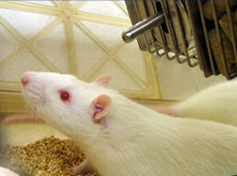
A knockout rat is a genetically engineered rat with a single gene turned off through a targeted mutation used for academic and pharmaceutical research. Knockout rats can mimic human diseases and are important tools for studying gene function and for drug discovery and development. The production of knockout rats was not economically or technically feasible until 2008.
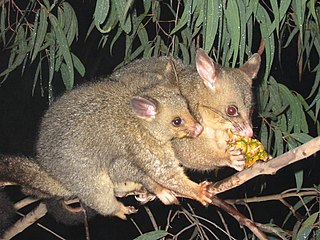
1080, the brand name given to the synthetic form of sodium fluoroacetate, is used in New Zealand in efforts to control populations of possums, rats, stoat and rabbits, which are invasive species in the New Zealand environment. Although the Parliamentary Commissioner for the Environment deemed the use of 1080 in New Zealand "effective and safe" in a 2011 re-evaluation and the substance is widely considered to be the most effective tool currently available for controlling possums over large areas, it remains a contentious issue, with the majority of the debate occurring between conservationists and livestock farmers on one side and hunters and animal-rights activists on the other.

Bal-chatri are traps designed to catch birds of prey (raptors). The trap essentially consists of a cage baited inside with a conspicuously visible live rodent or small bird, with a series of monofilament nooses attached to the surface to snare the legs of a free-flying raptor that attempts to take the bait. The name is derived from the Hindi word used by trappers in India. Modified bal-chatri traps are also used for catching shrikes.

Bird trapping techniques to capture wild birds include a wide range of techniques that have their origins in the hunting of birds for food. While hunting for food does not require birds to be caught alive, some trapping techniques capture birds without harming them and are of use in ornithology research. Wild birds may also be trapped for their display in captivity in zoological gardens or for keeping as a pet. Bird trapping was formerly unregulated, but to protect bird populations most countries have specific laws and regulations.
The Working Cats Program in Los Angeles, California, created by animal activist Melya Kaplan in 1999, is a green program that relocates sterilized and vaccinated feral cats to residences or businesses with large rat populations.

d-CON is a brand of rodent control products, which is distributed and owned in the United States by the UK-based consumer goods company Reckitt.

Goodnature is a New Zealand company founded in 2005 by two men, Robbie van Dam and Craig Bond. Goodnature specializes in the production of traps designed for the control of animal pests..

On August 21 1882, a man by the name of James Alexander Williams from San Saba County, Texas filed a United States patent No.269,766. for a mousetrap incorporating a handgun, "by which animals which burrow in the ground can be destroyed".
![]() Media related to Rat traps at Wikimedia Commons
Media related to Rat traps at Wikimedia Commons